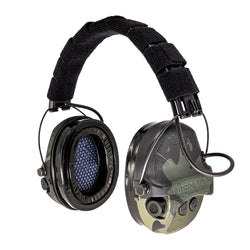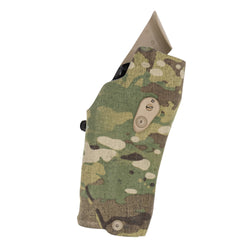The United States is a very young country, but we’ve fielded an impressive array of handguns. Coming into the 20th century, we were arguably one of the most forward-thinking military forces in terms of weapon selection. That’s slowed down as small arms development has come to a crawl, but the U.S. military remains an influential force when it comes to firearms.
Today, we’re taking a look at how military handguns influence the civilian concealed carry market.
Military Handguns
Over the past couple of centuries, the U.S. military has fielded dozens of handguns. While we’ll focus primarily on the modern era, we’ll also dip into some history. One of the most significant ways the military influences civilian concealed carry is through the types of handguns it adopts.

Take revolvers, for example. The military was an early adopter of revolver technology, helping propel Samuel Colt’s design into the limelight. Military adoption sends a signal to the rest of the world: this type of gun is good to go. We’ve seen this happen over and over.
When the military adopted the M1911, the semi-auto concept became widely accepted. Prior to military adoption, and admittedly for a while after, the semi-automatic was seen as less reliable than the revolver. The military’s move to semi-autos helped change that perception, and we saw a boom in new semi-auto designs.

The same could be said for the Beretta M9. It wasn’t just a semi-auto; it was a 9mm semi-auto with a DA/SA trigger system and a double-stacked magazine. Military acceptance of a ‘Wonder Nine’ still influences handgun design to this day. The SIG M17/M18 series handguns have shown that the military is eyeing modularity, and it might be the future of handguns.
In a direct way, military contracts keep gun companies in business. And if those companies stay in business, their guns make it to the civilian concealed carry market.
Specific Military Handguns
When the military adopts a firearm, that creates new demand for it. That adoption is a ringing endorsement. Military handguns are often full-sized pistols that aren’t the best choice for concealed carry. However, it’s not long before compact versions appear or become popular.

The SIG M18 is a perfect example. It represents SIG’s carry configuration, which is a very capable concealed carry option. The Beretta 92FS offers a compact model, and there are dozens of M1911 compact variations. Even the General Officer M15 Pistol was basically a Commander-sized M1911.
Ammunition Selection
Military adoption of a cartridge can be controversial in some cases, but it’s almost always a ringing endorsement of the cartridge. The .45 ACP only exists because the military wanted it, and it’s one of the most popular rounds of all time. The 9mm is older than the .45 ACP, but military adoption with the M9 propelled it to the top dog it is today.

The .45 ACP and 9mm have occupied a wide variety of concealed carry pistols, and both have been the caliber of choice of concealed carriers for generations. The military’s use of each cartridge guaranteed they would become extremely popular in the United States.
Accessory Selection
Some of the first guys to attach lights to guns were members of the special operations community. Surefire LPCs and Dawson Rail systems provided the necessary platform to mount lights to guns that were never designed to mount lights. In recent years, red dots have become popular with the concealed carry market only after the somewhat widespread adoption of pistol optics on special operations handguns.

Pistol red dots first appeared on competition guns decades before they were mainstream. However, it’s important to realize that many special ops guys were competition shooters. Early optics like the Docter or RMR Type 1 weren’t built for pistols, but special ops units adapted them. That led to dedicated handgun red dots and the market we have today.
Holster Selection
The military has long influenced holster selection, with some progressive police forces, like the FBI, also contributing. Specific holsters have gotten a good degree of popularity, but the military uses duty holsters rather than concealed carry holsters.

The military’s influence on the concealed carry holster market is apparent when we look at the evolution of material advancement and holster design. From early leather “gun buckets” to molded leather, then to nylon and advanced synthetics, and finally to modern polymer designs, the military has done plenty to endorse modern materials and holster designs.
Vice Versa
It’s important to realize that the military is never the first to do something. The civilian market often leads the way. The military wasn’t the first to use semi-automatic handguns, red dots, or field double-stack magazines. What the military does is take these concepts, test them, and provide proof of whether they’re viable or not.
That’s where their influence lies. When the military endorses something, it legitimizes it. That ripples through the concealed carry world and directly influences tactics, techniques, gear, and more.
Military handguns influence civilian concealed carry in more ways than one, even if it’s not always clear how.









